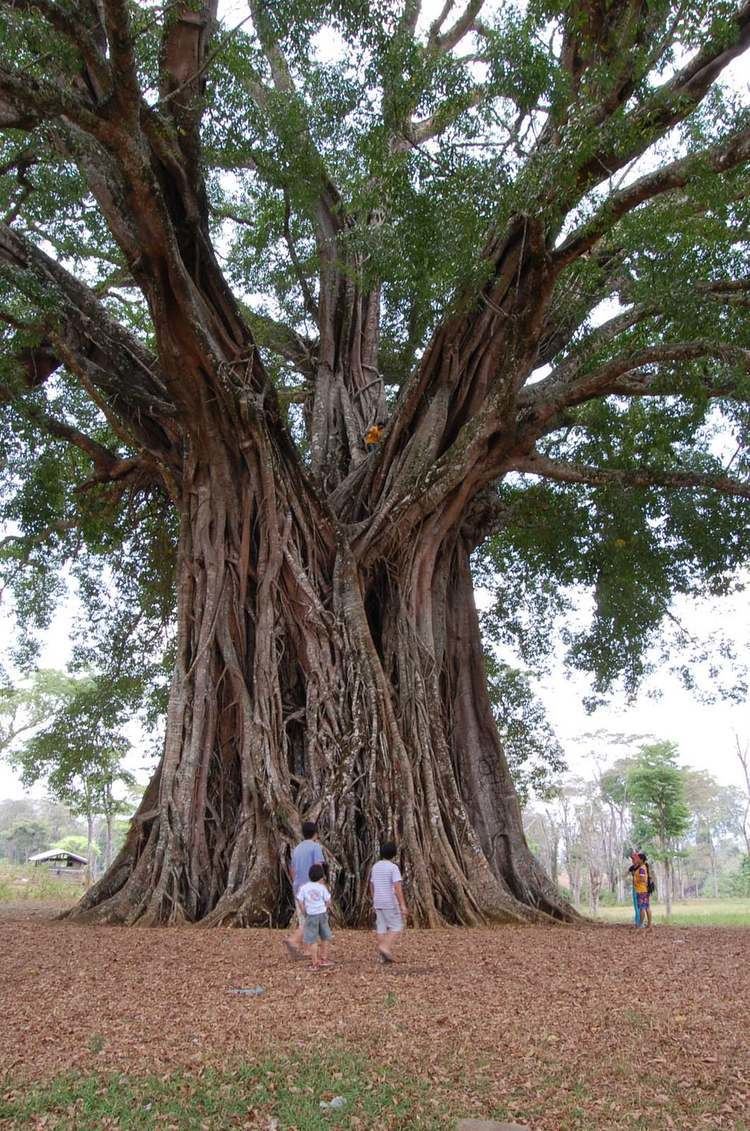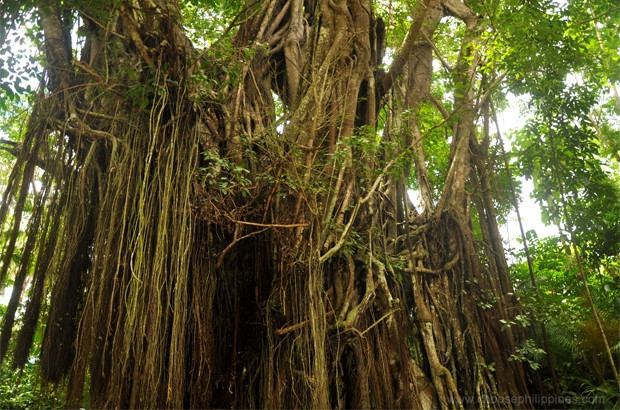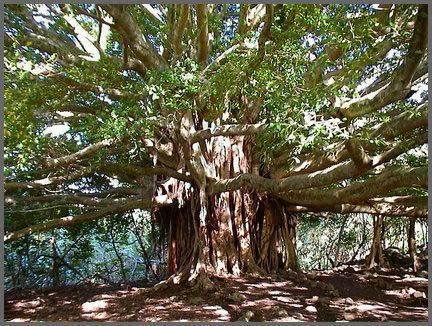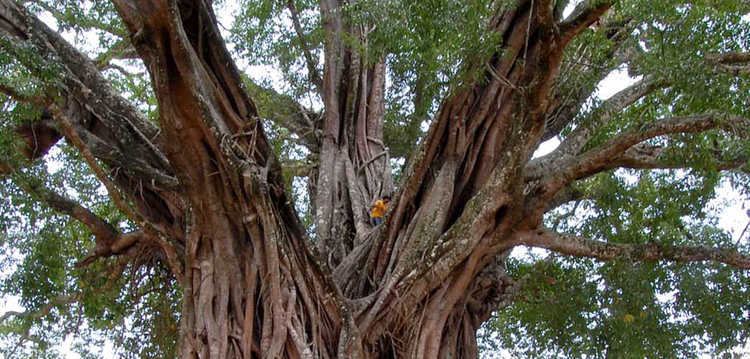 | ||
Similar Fig, Ficus variegata, Ficus nota, Vitex parviflora, Ficus benghalensis | ||
kapre lives in balete tree
Balete tree (also known as balite or baliti) are several species of the trees in the Philippines from the genus Ficus that are broadly referred to as balete in the local language. A number of these are known as strangler figs wherein they start upon other trees, later entrapping them entirely and finally killing the host tree. Also called hemiepiphytes, initially, they start as epiphytes or air plants and grow several hanging roots that eventually touch the ground and from then on, encircling and suffocating the host tree. Some of the baletes produce an inferior quality of rubber. The India rubber plant, F. elastica were earlier cultivated to some extent for rubber. Some of the species like tangisang-bayawak or Ficus variegata are large and could probably be utilized for match woods. The woods of species of Ficus are soft, light, and of inferior quality, and the trees usually have ill-formed, short boles.
Contents
- kapre lives in balete tree
- Balete tree at ma aurora aurora
- Ornamental use
- Local folklore
- Extreme examples
- References

Balete tree at ma aurora aurora
Ornamental use

Baletes are planted as graceful trees along avenues in Manila and other large cities in the Philippines, and they are also excellent as shade trees. Several species of the tree are also use for bonsai making in the country.

Baletes are used as houseplants; however, it is a source of indoor household allergens which may cause respiratory allergy.
Local folklore

In some areas of the country, some people believe that balete trees are dwelling places for supernatural beings like kapre or tikbalang. In some places, sorcery rituals are known performed inside the chambers formed by the tree. Also among others, some superstitious folks suggest not bringing in balete as decorative plants inside a house as they allegedly invite ghosts.

Balete Drive in New Manila, Quezon City, named after a gargantuan balete tree that used to stand in the middle of the street, is allegedly one of the most haunted places in the city. The tale of a white lady appears at night hailing cars that drive by have been circulated since the 1950s.
Extreme examples

